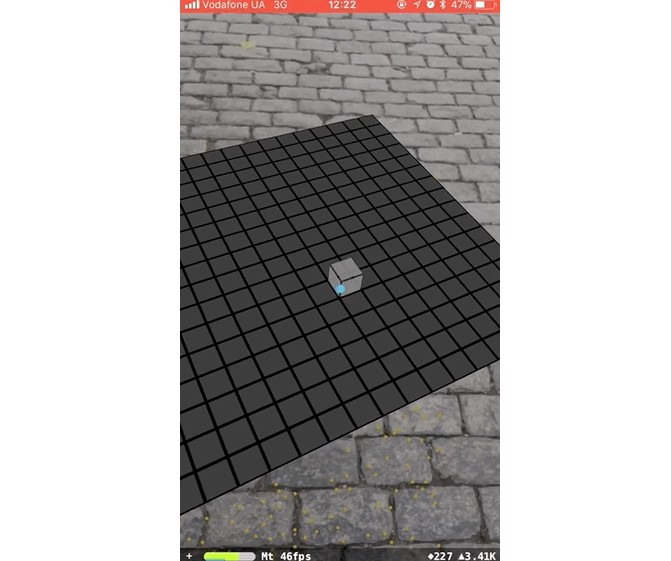ARVoxelKit
Lightweight Framework for Voxel graphic using AR + SceneKit

Requirements
ARVoxelKit requires iOS 11 and devices, which support ARKit
Usage
- Import libraries as follows:
import ARVoxelKit
import ARKit
import SceneKit
- Setup your ARSCNView with VKSceneManager manager in you ViewContoller:
var sceneManager: VKSceneManager?
@IBOutlet open var sceneView: ARSCNView! {
didSet { sceneManager = VKSceneManager(with: sceneView) }
}
override open func viewDidLoad() {
super.viewDidLoad()
sceneManager.delegate = self
}
override open func viewDidAppear(_ animated: Bool) {
super.viewDidAppear(animated)
sceneManager?.launchSession()
}
override open func viewWillDisappear(_ animated: Bool) {
super.viewWillDisappear(animated)
sceneManager?.pauseSession()
}
- Conform your delegate instance to VKSceneManagerDelegate:
public protocol VKSceneManagerDelegate: class {
var voxelSize: CGFloat { get }
func vkSceneManager(_ manager: VKSceneManager, shouldResetSessionFor state: VKARSessionState) -> Bool
func vkSceneManager(_ manager: VKSceneManager, didUpdateState state: VKARSessionState)
func vkSceneManager(_ manager: VKSceneManager, didFocus node: VKDisplayable, face: VKVoxelFace)
func vkSceneManager(_ manager: VKSceneManager, didDefocus node: VKDisplayable?)
func vkSceneManager(_ manager: VKSceneManager, countOfVoxelsIn scene: ARSCNView) -> Int
func vkSceneManager(_ manager: VKSceneManager, voxelFor index: Int) -> VKVoxelNode
}
- You can add/remove voxels by calling manager methods:
public func add(new voxel: VKVoxelNode)
public func add(new voxel: VKVoxelNode, to otherVoxel: VKVoxelNode, face: VKVoxelFace)
public func add(new voxel: VKVoxelNode, to tile: VKTileNode)
public func remove(_ voxel: VKVoxelNode)
- Edit surfaces, tiles, voxels using paint command:
public enum VKPaintCommand {
case color(content: UIColor)
case faceColor(content: UIColor, face: VKVoxelFace)
case colors(contents: [UIColor])
case image(content: UIImage)
case faceImage(content: UIImage, face: VKVoxelFace)
case images(contents: [UIImage])
case gradient(contents: [UIColor], start: CGPoint, end: CGPoint)
case faceGradient(contents: [UIColor], start: CGPoint, end: CGPoint, face: VKVoxelFace)
case transparency(value: CGFloat)
case faceTransparency(value: CGFloat, face: VKVoxelFace)
}
for example:
voxel.apply([.color(content: VKConstants.defaultFaceColor),
.transparency(value: 1)], animated: true)
- Change default setup by changing VKConstants values
Example
Check our example by running ARVoxelKitExample target




